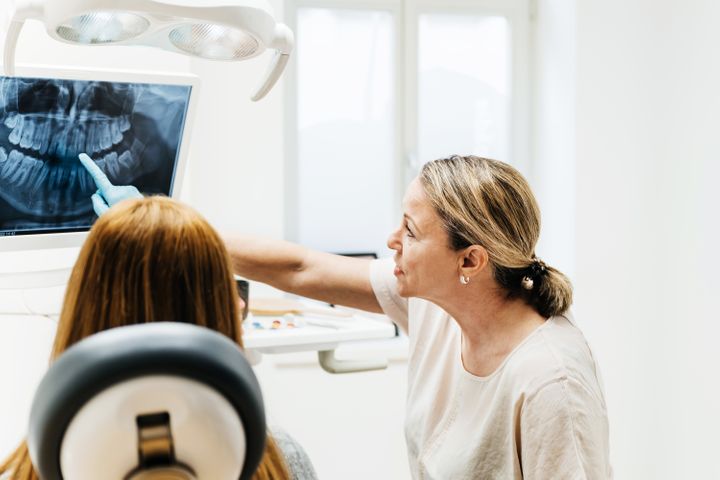If you’ve been on social media lately, mainly TikTok, you may have come across videos posted by medical professionals who claim people with red hair need more anesthesia when getting large-scale surgeries and routine dental procedures.
Some of the doctors on social media say this is definitely true. But experts don’t totally agree on this, and there is research worth pointing out on both sides of the argument.
“I have been getting this question frequently in the past few weeks, possibly because people see this on social media,” said Dr. Mike Sevilla, a family physician in Ohio. “People with red hair have a gene… which causes the distinct hair color and a particular complexion. There has been some research showing that those with that gene type require more anesthesia, but other research has not shown that.”
In other words, it’s more complicated than TikTok lets on. Here’s what experts say:
At the heart of this debate is the MC1R gene.
Dr. Carson Welker, an anesthesiologist in Minnesota, has posted about the redhead theory on his popular TikTok channel, ICU Doctor.
“There is a genetic and scientific theoretical framework that could explain anesthetic resistance in redheads, but the evidence is underpowered and only of moderate quality,” he told HuffPost, stressing that more research is necessary.
Why is it even a theory? He pointed to the MC1R gene. “When people have a mutation of the MC1R [gene], they have red hair,” he explained, but he added that not all redheads have the mutation.
The gene is also related to pain regulation, Welker said, as the MC1R also exists in the central nervous system.
“It is involved with regulating pain modulation — how much [pain someone] is experiencing and also… what is their tolerance to anesthetic,” Welker said. A couple of studies have found that people with this gene mutation may need more anesthesia.
“A lot of this is based on a study in 2004 where they gave redheads volatile anesthetic, which is a gas that you put through a breathing tube to [put someone to sleep]… They compared 10 people that have red hair and 10 that did not. And they confirmed that the red-haired people had the genetic mutation and they needed 20% more gas anesthesia,” Welker explained.
Though it was a well-done trial, he said, it was small.
“Are they hugely powered studies? No, they’re not. And, yes, that would be nice if we looked at 300 patients, not just 20 patients. Obviously, it would be way better. But I think there’s enough evidence to support the belief,” he said.
Some of the other studies that have been published did not consider whether their redheaded participants had the gene mutation, so their results are not considered clear.
When a study was done in mice with the MC1R gene mutation, researchers did see a difference when they were given gas anesthesia, Welker said. The mice with the gene mutation needed more anesthetic but did not need as much as 20%, the amount cited in the 20-person study on humans in 2004, he said.
All in all, the fundamental theory is that folks with the MC1R genetic mutation are not as sensitive to a lot of the aesthetics used in medicine, Welker said.
Dr. Richard M. Lipari, a dentist at Lipari and Mangiameli Dentistry in Chappaqua, New York, also pointed to the 2004 study and said redheads “typically need more local anesthesia, such as lidocaine, according to the American Dental Association.”
In fact, a 60-person study in 2006 found that women with red hair are more resistant to lidocaine than women with dark hair. Lidocaine is often administered to cause numbness, treat hurting mouths and more.
Tom Werner via Getty Images
Some doctors don’t believe it, and confirmation bias may play a role.
As with many hotly debated topics, some research points one way while other research points the other way.
A 2012 study of 468 people by researchers in Australia found “no evidence that patient hair colour affects anaesthetic requirements or recovery characteristics in a broad range of surgical procedures.”
Additionally, researchers behind a 2015 study concluded there is no difference in red-haired patients’ and non-red-haired patients’ responses to pain medication, so no additional anesthesia is necessary for those with red hair.
Dr. Mike Wei, a cosmetic dentist in New York City, agrees with that study’s findings. “There is no strong evidence to suggest that people with red hair need more anesthesia or local topical anesthetics than other people,” Wei told HuffPost via email.
His thoughts likely echo those of other experts who are wary of the research because of the small sample sizes in the studies and inconsistencies in their findings.
“Research has not consistently shown why people with red hair need more anesthesia,” Sevilla said.
“I bet some people think it’s folklore, that it’s not true. And I think there’s a spectrum because… I don’t think this is a slam-dunk thing,” Welker said, adding that the number of people who believe the theory is out of proportion with what the actual research supports.
“You take moderate data and combine it with confirmation bias and anecdotes, and then something becomes a ‘fact’ when it’s not really proven yet to be a fact,” Welker said. “That’s the case with redheads and anesthesia.”
In other words, if a single redheaded patient requires more anesthesia, it could have nothing to do with their hair color. There are other factors at play, too. Wei said the amount of anesthesia or local topical anesthetic a person needs depends on a number of factors: age, weight, physical condition, medical history and the intended procedure.
If you have red hair, what’s important to know?
“Even though the research is sometimes conflicting on whether people with red hair consistently require more anesthesia, I always advise my patients to be proactive and to notify their surgeon, their anesthesia team and their dentist of the possibility of requiring more anesthesia,” Sevilla said.
Talking to your doctor about this is certainly not a bad thing — especially if you’re anxious about it before an appointment. But also remember your doctor is an expert who understands how to dose your anesthesia.
Welker said no matter a person’s hair color, “when I’m inducing, I give them enough [anesthesia] until I see that they’re asleep.”
And during a procedure, doctors measure how much anesthetic gas you’re breathing out to make sure you’re fully asleep during surgery, too, he noted. “We know based on decades of research what that number needs to be to ensure that they’re unconscious.”
In other words, your doctor will be well aware if your anesthesia is wearing off. How much an individual needs varies from person to person, no matter the color of their hair.


